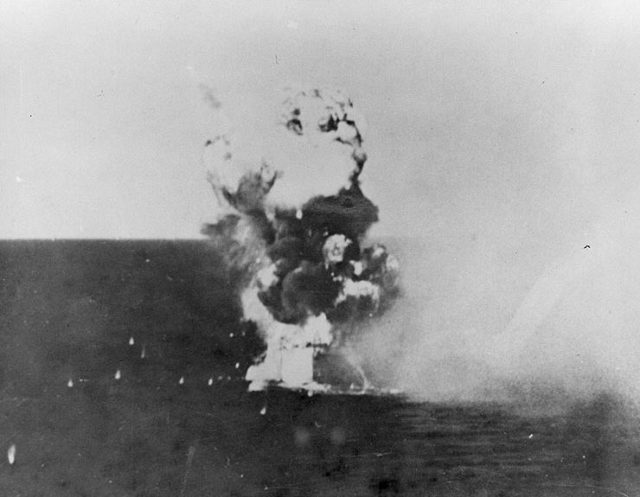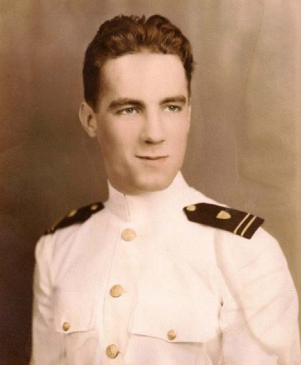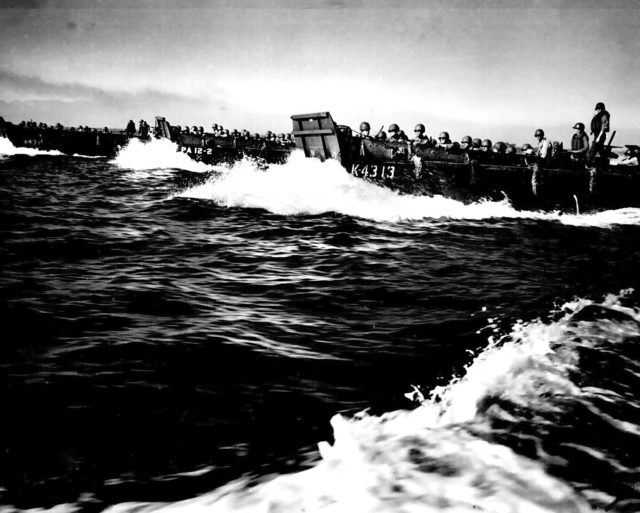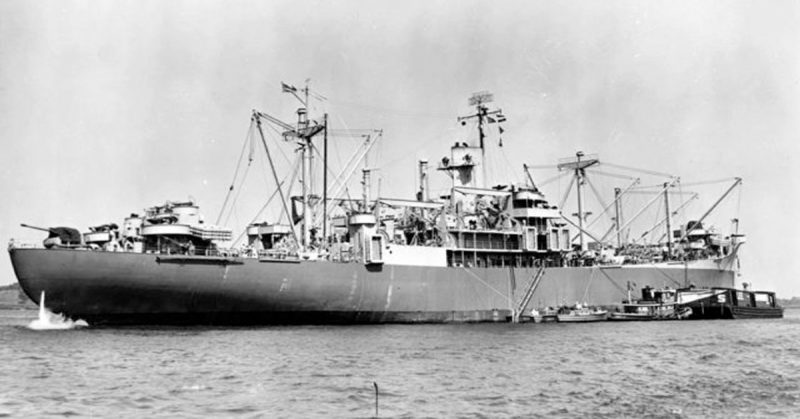January 7, 1945.
USS Callaway (APA-35) was steaming towards Lingayen Gulf, in the Philippines, as one ship in a massive invasion fleet. Onboard she had over 1,500 US Army troops.
They were there for one purpose; to take back the islands. Over three years before, Japanese troops had torn apart American defenses throughout the Philippine islands. The tide had turned, and now the United States were coming back in force.
However, the Japanese had some tricks up their sleeves.
Callaway was one of 875 ships in the assault force. The fleet was difficult to hide and a huge target for their enemy. As they neared their destination, Japanese planes appeared in the sky.
They swooped down, coming in for what seemed like a bombing run. Nearly every ship in the fleet opened up a massive barrage of anti-aircraft fire, creating a wall of lead and steel. But still, some planes made it through.
The Americans realized these were not bombers. They were Kamikazes, using their planes as weapons. Every plane which hit a target exploded into a massive ball of fire, the fuel flashing off in an instant.
The Kamikazes were either destroyed or destroyed themselves.
The fleet, though damaged, continued with their journey.

January 8, 1945.
The ships were organized into four long lines, ready to send wave after wave of infantry onto the beaches, and retake the islands.
That day Lieutenant Junior Grade Charles Dorian was in the CIC (Combat Information Center). He could hear the sirens blaring and the anti-aircraft fire roaring around the fleet.
He received a report saying a plane was approaching from the rear of their line. The last ship in this column advised bombs had been dropped, and they were engaging the attackers. Each ship down the line reported the same.
Dorian was being given a play by play report of this plane approaching his ship, and he passed each report to the Captain on the bridge. Finally, he yelled, “They are off the stern of the ship!”

Suddenly a wrenching crash shook the entire hull. Everything went black for a few seconds. As Dorian’s vision returned, he reached for something to hold on to.
The aft-most bulkhead or wall was warm to the touch. Dorian did not know what had happened as yet, but he knew a warm bulkhead meant one thing; fire.
He stumbled forward and called the bridge through an intercom. No response. He found the door, and made his way, cautiously. The entire bridge crew, including the Captain, were in a state of shock and were still dazed. Dorian knew he had to act quickly.
He asked the helmsman to turn the wheel, and the ship began to rotate. Thankfully, the steering had not been damaged, but he needed to find out what had been. Was it a bomb? Was it a Kamikaze? Was it a freak accident?
Next, he checked the engines. Dorian called down to the engineering chief telling him to move the thrust indicator; it also moved on the bridge. Those connections were intact as well.
Finally, he asked the First Lieutenant for a damage report. Calling from the bridge, he asked if the fires were under control and if there was anything they needed to do. The reply came back that everything was under control.

The men on the bridge slowly recovered from their shock. Dorian knew what he had done was potentially career-ending. He had taken control of a ship without order or authorization, and while the Captain was still alive.
If nothing else, it was against protocol, and he knew he could be accused of usurping their authority. He calmly explained what he had done, and returned command of the ship to its rightful hands.
USS Callaway had been hit on her flying bridge by a Kamikaze pilot. This open air deck held thirty people, including the crews for her 2.20mm cannons. Tragically all thirty were killed in the attack.
Callaway continued on her journey; they had a timetable to meet and a formation to hold.
She made it to the invasion point the next day, and sent in over 1,500 US Army troops to Lingayen Gulf, marking the beginning of the end of Japanese occupation in the Philippines.
